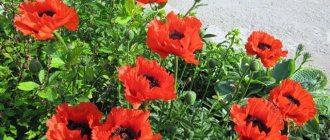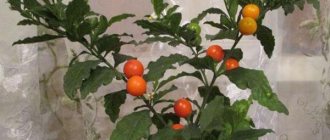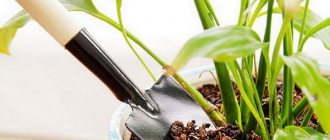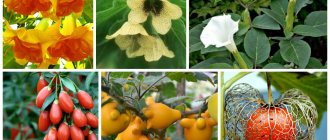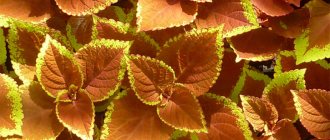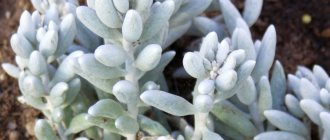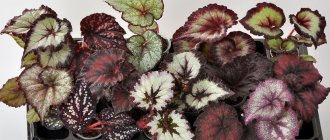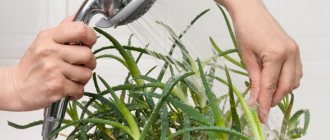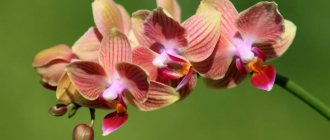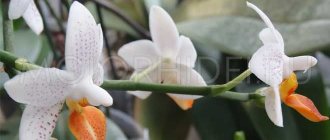The “relative” of tomato, eggplant and potatoes - nightshade - is not as often found in summer cottages as the above-mentioned crops. Many will immediately tell you that its glossy black or red fruits and berries are deadly poisonous and it is better to keep this plant away from household members, especially if there are children in the house.
Others will remember the medicinal properties of nightshade, which have been known for hundreds of years, and still others will confidently claim that they tried delicious jam from their summer residents - yes, all from the same nightshade. Who is right?
In fact, everyone is right! After all, the genus Nightshade includes more than 1000 species, and all these plants sometimes have completely opposite properties. Let's understand all this diversity together - what kind of nightshades there are and what is more of them, benefit or harm in a summer cottage.
Indoor nightshade: a piece of bright summer in the middle of winter
Solanum (Solanum) is popularly known as: nightshade, coral bush, indoor cherry, Chinese cherry, Cuban cherry, Jerusalem cherry. The nightshade houseplant is a low, evergreen, deciduous shrub native to South America and the island of Madeira with oblong, glossy leaves.
The unusualness of nightshade remains all year round: the branches are simultaneously showered with flowers, green ovaries and bright orange ripe berries, which are really very similar to cherries.
Unfortunately, such a bright representative of the nightshade family is poisonous . It should not be kept in a house where there are small children who can pick and taste the poisonous berry. If the fruits of nightshade are not eaten, then there is nothing to be afraid of - the plant cannot cause any harm.
What kind of nightshade plant is this?
Indoor nightshade is popularly called winter cherry or coral bush. Quite often in home cultivation you can find pepper and false pepper nightshades. They differ from each other, although only slightly. The main difference lies in the shoots of the bush. The false pepper nightshade has smooth, hairless shoots and leaves, while the pepper nightshade has them covered with a light gray fluff. They also differ in their properties.
The fruits of the pepper nightshade are used in folk medicine to treat sore throats and heal wounds, and the false pepper representative is a poisonous killer.
Therefore, if a plant decorates the interior of a room, it should be located at a considerable distance from the floor so that children’s little hands do not get to the delicious berries.
Nightshade reaches a height of half a meter, is very decorative and often becomes a decoration during the New Year holidays, when the fluffy green bush is strewn with bright multi-colored berries, hence the name - winter cherry. Small berries appear after flowering and as they ripen they change color from green to rich burgundy. At the same time, the ripening of fruits on one bush is uneven, so cherries, tomatoes or peppers are of different shades, which increases the decorativeness of the plant.
Varieties
More than 1,700 species of Solyanum grow in the tropics and some temperate regions. But we will consider only two of them, which are most often grown at home.
False pepper nightshade – S. pseudocapsicum. An erect evergreen shrub, growing up to 120 cm. Leaves with short petioles, oval or lanceolate, glabrous and slightly wavy.
The flowers are white, small, with five petals; the fruits are round, red or yellow, up to 1.5 cm in diameter. Originally from o. Madeira. Low-growing forms of decorative nightshade have been bred for indoor cultivation.
Pepper nightshade – S. capricasrum. Much smaller in size than false pepper, it has smaller berries and more tender shoots, green with a grayish tint. At home - in Uruguay and Southern Brazil, it grows in forests. The most popular varieties are: Craigii - with multi-colored fruits and Variegatum - a variegated variety.
A little about physalis varieties
The Solanaceae family includes more than a hundred varieties of “common physalis”, which are divided into types: food (edible) and decorative.
Food Physalis
The edible fruits of physalis are consumed fresh, added to marinades, sauces prepared, dried, and canned. The juice is squeezed out of them and used as a seasoning for dishes. Dried fruits make amazing cake decorations. The pectin content in berries allows them to be used as gelatin for homemade preparations.
Food types are divided into groups: vegetable and berry.
Vegetable physalis is of Mexican origin. This is where its name “Mexican tomato” comes from. Large (50-150 grams) and juicy fruits are similar to tomatoes. The plant is high-yielding, unpretentious. Grows in the middle and southern regions of Russia. Loves soils rich in humus. Blooms in May-June. Ripens in August-September. The plant is perennial, but freezes to death in cold regions. Fresh berries are stored all winter. To do this, you need to leave the petals on the fruit.
Physalis berry is native to South America. The fruit is small in size. When fresh, its weight is only 2-3 grams. There is almost no juice in the berry. It has an excellent taste due to its high sugar content: 3.92 grams per 100 grams of product. The berries make excellent raisins, which are used in compotes, marmalades, candied fruits, and candies. Dried physalis fruits retain all their properties and can be stored for a year.
Physalis berry did not take root in Russia due to the need to grow it in greenhouses, where all the places are occupied by tomatoes. It is cultivated only in amateur gardens.
Before using fresh berries, you should first clean them of poisonous petals, then pour boiling water over them to wash off the sticky coating.
Nutritional value of physalis berries (per 100 grams of product): proteins - 2 grams, fats - 0.6 grams, carbohydrates - 11.3 grams. Calorie content - 35 kcal.
Such a low calorie content makes it possible to use physalis berries for people on a low-calorie diet.
Conditions of detention
Caring for an indoor nightshade flower assumes the optimal spring-summer air temperature for solanum is about +15 +25°C. With the approach of cold weather, the bush will need to lower the temperature level - to +13 +15°C. Lighting also plays a huge role. It should be borne in mind that nightshade loves bright light, but not heat.
humidity level in the room with a hygrometer - it should not be lower than 60%. If there is insufficient humidity, it is necessary to spray the plant daily and place it in a tray with wet expanded clay or pebbles once a week.
Content temperature
In the warm months of the year, the nightshade flower is quite satisfied with the ambient temperature familiar to our latitudes, but 18 - 28 ° C is still considered optimal, since it does not like extreme heat. Moreover, it is advisable to ensure natural daily temperature changes - at night he likes coolness.
But the solyanum is used to surviving winter at relatively low temperatures - 12 - 16 ° C, no more, otherwise it will shed its leaves and berries. In addition, if this condition is not met, the plant, which should rest in winter, will actively spend its energy on young shoots and by spring will be greatly depleted, which will affect its decorativeness and even health. In addition to the fact that such a bush is unlikely to bloom, it will often get sick.
Reproduction
Homemade nightshade can be grown from seeds or cuttings. Depending on the planting method, the fruits may be more or less large. When grown from seeds, the bush usually grows strong and bears fruit well. When propagated by cuttings, the plant requires more time to adapt and take root in the new soil.
Nightshade seeds are sown in late February - early March, using the following substrate composition :
- peat 1 part;
- clay soil 3 parts;
- sand 1 part;
- drainage.
Nightshade seeds are sown at a distance of 20 mm from each other, pressed 1 cm into the ground, watered and placed on a windowsill with good lighting. When the shoots (after 8-10 days), they need to be shaded a little. Within a week, when the young shoots gain strength and produce 2-3 leaves, they are transplanted into separate containers. For grown 10-centimeter plants, pinch the top , remove the side shoots, giving the bush the shape of a ball.
Your long-time dream to know: how to grow ginger on a windowsill? We turned it into a valuable article.
Read with us about the rules for caring for asparagus at home.
Decoupage of a flower pot https://sad-doma.net/polezno/svoimi-rukami/dekor-gorshkov.html can be easily created with your own hands, find out how - follow the link.
Solanum propagation
Indoor nightshade is easy to grow from seeds that are sown together with summer plants, superficially, lightly covering with sand, under glass or film. Young plants are kept in the brightest possible light and pruned after the appearance of a pair of true leaves, with the pots being changed again to permanent ones after they have grown to a height of about 15 cm
It is very important to start pinching as early as possible.
Nightshade can also be propagated by cuttings, rooting young, non-fruiting shoots remaining after pruning or summer semi-lignified shoots under a cover in light, slightly moist soil.
Winter and summer nightshade care
Caring for a nightshade indoor plant in the cold and warm seasons has its own distinctive features. Features of seasonal care spring-summer .
- Young seedlings are watered as the soil dries.
- During the growth period, fertilizing is not needed. It is enough to carefully loosen the soil along the edges of the flowerpot so as not to injure the roots.
- When a nightshade blooms, it needs help transferring pollen from one flower to another (to pollinate).
- Upon reaching the age of 4-5 years, the plant is transplanted into a substrate mixed with turf.
- With the onset of summer, the flower is taken out into the open air to a shaded place protected from drafts.
- Water abundantly, adding fertilizer to the soil at least once every 2 weeks with a mixture of useful substances for tomatoes. Liquid fertilizers such as “Ideal” or “Rainbow” also give a good effect.
- Spray the leaves twice a day - morning and evening.
Features of seasonal care autumn-winter.
- As cold weather approaches, reduce the intensity of fertilizing and watering (water once every 10 days with soft water without chlorine). Nightshade should be in a dormant period from October to February.
- The pot with solyanum is placed in a cool, illuminated place with high humidity.
- Ventilate the plant once a week.
- At the end of February, the cherries will begin to wake up. During this period, you need to increase watering and start spraying.
Problems during cultivation
Although nightshade is an unpretentious plant, some difficulties in its maintenance still exist:
- Poor fruiting or lack thereof. This is caused by insufficient pollination during the flowering period. If the plant is not taken out into the open air, it is recommended to pollinate it artificially. For these purposes, use a soft brush, with which pollen should be transferred from one flower to another. To consolidate the effect, the procedure is carried out several times.
- Nightshade sheds leaves and berries. The cause may be drafts, sudden temperature changes or heat. To eliminate these troubles, you just need to find a more suitable place for nightshade.
- Pests. Insects can also cause inconvenience to the plant: whiteflies, aphids and spider mites. Those plants that are kept in dry air conditions are at risk. When you detect the first signs of an insect attack, you should treat the plant with appropriate chemicals or use folk remedies (if the damage is not severe).
Difficulties and reasons for their occurrence
Few fruits mean the bush is not pollinated enough. During the flowering period, you need to carefully transfer pollen from flower to flower with a soft brush or cotton swab.
Fruits and leaves fall . The cause is usually too high temperature and humidity in the room.
Pest infestation . The reason is insufficient air humidity.
Solyanum, like other nightshades, can be affected by whitefly . Greenish larvae settle on the back of the leaves and suck the juice out of them. First, the leaves become covered with spots, then dry out and fall off. If you touch a diseased plant, a swarm of small white flies flies out of it.
Aphids attack more often in the summer, especially if the pot of nightshade is taken out into the fresh air. Affects the tops of stems and leaves. In both cases, plants need urgent treatment with insecticides: actellik, decis, fitoverm, inta-vir, etc.
This is how exotic it is and unlike anyone else - Chinese cherry, also known as Jerusalem cherry, Cuban cherry, or simply nightshade . It belongs to the category of ornamental plants that do not tolerate loneliness. Feeling a loving heart nearby that cares and helps is the main thing for nightshade.
Give him a small piece of your kindness and attention, and he will delight you all year round with his lush greenery and unusual bright fruits.
And for those who like to know more, we invite you to watch a video about caring for a nightshade houseplant
Tips for caring for indoor nightshade
Lighting . Nightshade is a light-loving plant. Prefers diffused light. In the shade, nightshade almost does not bloom, stretches out and loses its decorative effect. In winter and autumn it is better to keep it on a south-facing window; from mid-spring it is advisable to shade it from direct sunlight. In summer, the best place for nightshade is a balcony or veranda.
Temperature . In summer, nightshade grows well at normal room temperature; it does not like heat; it benefits from changes in night and day temperatures. In winter, it is recommended to reduce the temperature to 12-15 °C. In cool conditions, the berries stay on the branches longer. In summer, it is too hot for the plant on a south-facing window.
Watering . Decorative nightshade is watered regularly and abundantly during the period of active growth and fruiting. In winter, watering is reduced to moderate; the cooler the room, the less moisture is required. But at the same time, you should not overdry the earthen lump. It is useful to spray with slightly warm water.
Fertilizer . Additional nutrients are needed for the formation of flowers and fruits. Fertilize twice a month with complex fertilizers for flowering plants in spring and summer. In winter, you can not fertilize or feed with a half dose once a month.
Trimming . Nightshade tolerates pruning well. It is carried out after fruiting in order to preserve the decorative appearance of the bush. At the end of winter, the leaves of the plant often turn yellow and fall off. Pruning has a beneficial effect on the condition of the plant. First of all, the main stem is shortened to stimulate the growth of side branches. Then they pinch off their ends.
Transplant . It is best to replant indoor nightshade in early spring before growth begins. The substrate must be loose and breathable. Be sure to add a layer of expanded clay or other drainage material in the pot so that excess water flows out freely. The nightshade is heavily pruned (by about a third) and transplanted into fresh soil.
Nightshade is not considered a long-lived plant. It grows quite quickly and loses its decorative effect. Many gardeners prefer not to replant old plants, but to re-root cuttings.
The soil . The mixture for replanting nightshade can be taken as follows: mix turf, peat, humus soil with sand in a ratio of 1:1:2:1.
Fruiting . Sometimes it happens that nightshade blooms, but the berries do not set. If the bush is on the balcony, then a light breeze freely carries pollen. It is advisable to pollinate the flowers in the room using a soft brush.
Diseases and pests . In a dry and hot room, nightshade can be affected by spider mites. To combat it, it is necessary to regularly spray the plant and use acaricidal agents to treat the affected areas.
Pests are often discovered when moving pots from the garden back into the house. In summer, aphids appear on the plant. Bushes must be treated with insecticides for prevention.
Reproduction . Indoor nightshade is propagated by seeds and cuttings. It is easier to propagate by seeds. They self-sow when the ripened berries fall off, if the pot is wide enough. Young plants are dug up and planted in separate pots.
Seeds can be collected and sown in a wide container in the spring. They are not buried in the soil, but simply laid out on the surface and lightly sprinkled with sand. Germinate at a temperature of 20-22°C under film. Shoots by
In spring and summer, it can be propagated by cuttings, which take root well in a mixture of equal parts of peat soil and sand. Cuttings are taken with 2-4 leaves and rooted under film. For better branching, young plants are pruned several times during the summer.
The genus nightshade or, as it is also called, solanum (Solanum) is directly related to the nightshade family. There are approximately 1000 species in this genus, including both herbaceous plants and shrubs, as well as trees. They grow in temperate and warm climates around the globe. Under natural conditions, nightshade can most often be found in South America, the homeland of eggplants, tomatoes and potatoes.
Only a few species are grown at home, which include false pepper nightshade (Solanum pseudocapsicum). This plant comes from several places, namely: Ecuador, Peru, and the island of Madeira. Under natural conditions these days it can be found in a large number of countries around the world, and in Australia over several centuries it has turned into a weed that is not so easy to get rid of, which confirms the unpretentiousness of this nightshade.
This evergreen plant is compact and is not a very tall shrub. In wild conditions, the height can reach 100 centimeters, in domestic conditions - somewhat less. Its lanceolate, dark green leaves have slightly wavy edges and short petioles.
Its small white flowers are collected in not very large racemes or they are solitary. Flowering can begin in any month. However, the main decoration of this plant is its pods. The fruit is a round berry, the diameter of which can be from 1 to 1.5 centimeters. They are painted red or rich orange. The fruits do not fall for a long time, so the bush remains “decorated” almost all winter. In order to increase the time the berries stay on the bush, nightshade should be placed in a cool room.
Indoor nightshade
The perennial evergreen dwarf plant nightshade (solanum) can be a wonderful decoration for any room if you know how to care for solanum. Growing in the form of a bush or small tree, it has luxurious decorative qualities - all year round there are white flowers, dark green round ovaries and bright red fruits on nightshade branches. The trunk of indoor nightshade is woody, the leaves are small and elongated.
Nightshade is native to the island of Madeira and South America. The plant is considered an annual, but experienced gardeners have learned to extend its life. Caring for indoor nightshade involves annual replanting, providing good lighting and regular watering. To form a luxurious, lush crown, pruning is necessary.
Orange garden flowers
Orange flowers are an effective antidepressant in the garden. They lift your spirits, revive joy and warmth in your soul. In landscape design they are used to create contrasting compositions and bright solutions.
- Annuals
- Marigold
- Viola
- Gaillardia
- Dahlia
- Fragrant tobacco
- Calendula
- Nasturtium
- Zinnia
- Perennial
- Gabranthus
- Helenium autumn
- Gladiolus
- Zaushneria
- Bearded iris
- Calla
- Bloodroot
Nightshade - home care
Despite the fact that indoor nightshade was brought from a tropical climate, the flower has perfectly adapted to the conditions of mid-latitudes. In the summer, it can be taken out into the garden or onto the balcony, to which the plant will respond with abundant flowering within a few days. If the plant is not provided with proper lighting, it will stretch out and there will be few flowers.
Video - caring for indoor nightshade
Temperature Nightshade is a heat-loving plant. In the summer months, the optimal temperature will be +20-+25 degrees. In winter, when active vegetation slows down, nightshade tolerates cooler temperatures, but not lower than +15 degrees.
Moistening and watering Indoor nightshade “loves” moisture, so on hot days you sometimes have to water it every day. The soil in the pot should be constantly slightly moistened so that the nightshade roots do not dry out completely. Experienced gardeners use special automatic watering devices to maintain sufficient moisture.
The plant needs to be sprayed with a spray bottle every few days. This procedure will provide a certain humidity. Also, do not install it near heating devices.
Replanting Indoor nightshade requires regular replanting. This is done at the moment when the plant’s flowers completely fall off. A mixture of peat, leaf soil and turf is ideal as a substrate. Expanded clay or clay shards must be placed at the bottom of the pot to ensure drainage.
Fragrant tobacco
This culture can not only decorate any garden, but also delight with its fragrant aroma. Fragrant tobacco has bright inflorescences that come in pink, white, crimson and orange. Fragrant plants always look attractive and fresh. It is used to decorate flower beds, rockeries and rock gardens.
Quite often, landscape designers use lemon-yellow varieties to decorate flower arrangements. This shade can perfectly coexist with other flowers that are planted in the garden and flower bed.
Low-growing varieties are usually used to decorate borders, planted in the foreground of flower beds or on window sills at home. Medium-sized varieties are planted to decorate stairs, paths, terraces, and gazebos. Tall varieties of fragrant tobacco will look ideal along the wall of a building or fence.
Indoor nightshade - propagation by seeds and cuttings
Nightshade can be propagated by seeds and cuttings. In the first case, seeds from ripened fruits are used. They are sown in peat or any other loose soil and lightly sprinkled with sand. The soil should be constantly moistened with a spray bottle. It is better if the container with the seeds is placed in a warm place and covered with film. As they germinate, young plants dive 1-2 times.
Indoor nightshade - propagation by seeds
You can grow indoor nightshade faster by cuttings. The branches remaining after pruning are used as cuttings. They take root well in a substrate of peat and leaf soil and grow very quickly, producing new shoots.
Growing nightshade from seeds
Nightshade is very easy to propagate from seeds. They are extracted from fully ripe, shriveled berries. Sowing begins in January. To do this, prepare a light substrate from a mixture of peat sand and vermiculite. Before sowing, the seeds are pickled for 30 minutes in a dark pink solution of potassium permanganate.
In the future, this will protect the seedlings from fungal diseases.
Seeds germinate unevenly. The first shoots appear after 2 weeks, the last after 2 months. At one month of age, the seedlings are planted in separate containers. Young plants bloom in 6-7 months.
Diseases and pests of indoor nightshade
The main pests that very often attack indoor nightshade are whiteflies and aphids. To avoid trouble, it is best to constantly monitor the condition of the leaves. If the plant is already affected, insecticides are used against insects. You can protect nightshade from pest attacks by providing it with good ventilation and appropriate air temperature.
Other problems that can overshadow the owners of a charming bush include the lack of fruits, which give the plant its decorative appearance. In this case, artificial pollination of flowers will be required if the nightshade is indoors, or you can simply take it outside for a few days.
Another feature of this ornamental tree is its poisonous fruits. It is believed that in the homeland of nightshade they are used to prepare medicinal decoctions, but you still need to be careful and keep the berries away from children.
Solanum - a bright and unusual indoor nightshade
Among fruit-bearing indoor crops, only a few can boast of such brightness as indoor nightshades. Large ball berries, the color of which changes as they ripen, look like artificial beads on the bushes. Miniature nightshade is one of the most interesting and neat indoor plants. Unfortunately, fruits can only be preserved for a long time in cool conditions. This plant is very demanding on temperature conditions, but responds to proper care with generous fruiting.
What is the appeal of indoor nightshade?
As you already understood, a houseplant with orange berries is nightshade, or solanum. Belongs to the nightshade family. Its homeland is the tropical part of South America.
There are various rumors about him. Some flora lovers are afraid to keep it at home. It turns out that the bright berries for which the flower is valued have poisonous properties. The fruits should not be eaten. Be careful if there are small children in the house. Place the plant on high, inaccessible shelves and cabinets, or avoid the flower altogether.
Nightshade does not produce any toxic fumes. If he just stands indoors, he won't cause any harm.
Nightshade is a small evergreen shrub. The leaves are shiny, oblong in shape. The fruits are large, similar to cherries, and have a fiery orange color.
A houseplant with orange berries, a photo of which will prove its beauty, will, with proper care, delight you with its ovaries and flowers. All this creates a beautiful picture. Therefore, nightshade is an excellent room decoration and addition to the interior.
Decorative nightshade
In addition to the above-described “local” nightshade species, which are sometimes dangerous, but quite suitable for decorative landscaping, there are other nightshades brought to us from other regions, which are usually bred as indoor plants or ornamental annuals in open ground.
We present to your attention several such types of nightshade.
False pepper nightshade (Jerusalem cherry, Christmas cherry)
A South American shrub with bare shoots, lanceolate green leaves with a wavy edge, white flowers and large red-orange “tomato” berries that remain on the branches even in winter. In open ground it can reach a height of more than a meter; in an apartment, its dwarf form is grown in pots. Leaves and fruits are poisonous.
Nightshade papillary (apple of Sodom, female fruit, five-fingered eggplant, fox face)
A South American shrub with bare thick thorny shoots, large pubescent leaves, light pink-purple “potato” flowers with narrow petals and very original shaped yellow berries, reminiscent of either a cow’s udder or the face of some animal. In open ground it can reach a height of more than one and a half meters; in an apartment, its dwarf form is grown in pots. Leaves and fruits are poisonous. Stems with fruits are excellent for cutting and are actively used in floristry.
Nightshade jasmine
An evergreen climbing vine with stems 1.5-2 m long, with thin green bare shoots, simple leaves, very light blue or white flowers and coral-red berries. Plants are grown as ampelous plants in hanging pots or in the form of pyramids on a support.
Nightshade (Chilean potato tree)
A South American semi-evergreen plant with climbing stems, long oval leaves, fragrant lilac flowers and small yellow-orange and later purple berries. Valued by gardeners for its long flowering period. It has white-flowered and white-fruited forms. The berries are toxic.
Also, for decorative purposes, you can grow giant nightshade, pepper nightshade, Wendland nightshade, Seaforth nightshade, Rantonnetta nightshade, etc.
- 7 poisonous plants that can be confused with cultivated plants
How can you avoid getting into trouble and putting your health in danger if you are not sure which plant is in front of you?
The most popular varieties
The nightshade family has about 1,700 members. The most common types of solyanum are kept at home, as well as in gardens and greenhouses.
False pepper
The shrub is about 30-50 cm high. The leaves have a rich green color and grow quite densely. It blooms with small white flowers almost constantly. As the fruits ripen, they change color from green to red. The flower is kept mainly as an indoor plant due to its small size. A dwarf subspecies with a height of only 30 cm is presented at the flower market.
Pepper-shaped
The size of the pepper nightshade is smaller than that of the false pepper nightshade. The leaves are more fragile and have a grayish tint. The berries and flowers are small. The fruits stay on the branches for up to 4 months. A decoction of the berries is used as a gargle for sore throats, but you should not drink it.
Curly
This type of nightshade is an evergreen vine. The flowers are shaped like stars, the fruits are light yellow in color. It is unpretentious in maintenance and is often used to decorate gazebos and walls. Unlike many representatives of its species, it tolerates cold well. Therefore, it can be used on external facades.
Vendlana
Solyanum vendlana is a climbing evergreen shrub that can grow up to 6 m in height. There are small thorns on the branches. The leaves are long (up to 10 cm), dissected in shape. The lower foliage is larger (up to 25 cm). This species has very beautiful purple-lilac flowers in the shape of a bell.
Which type of nightshade to choose is a matter of taste. It is also worth considering the size of the flower. Large spreading representatives are suitable only for large houses.
Poisonous and medicinal nightshade
Only three types of nightshade are found growing wild in Russia - black, bittersweet and horned. One of them is conditionally edible, and the other two are poisonous (among the Solanaceae, by the way, there are generally a lot of poisonous plants - belladonna, datura, henbane).
Moreover, the first two are valuable medicinal plants, the third is a dangerous weed. It is interesting that it was the horned (spiny) nightshade that was once in America the original host plant of the Colorado potato beetle, which later “moved” to potatoes, finding it more tasty. This species is rarely found here - usually only in the southern regions of the Far East.
Bittersweet and black nightshade are much more common in Russia. Their main value lies in the rich chemical composition of rhizomes, fruits and greens (alkaloids, steroids, terpenoids, fatty acids, etc.), which is why they have long been used in folk and official medicine for the production of wound-healing, diuretic, decongestants, expectorants, as well as drugs that relieve headaches and inflammation.
Other types of nightshade - avian, lobed, etc. - are also cultivated in Russia as introduced crops to obtain valuable medicinal raw materials.
The berries and young leaves of black nightshade are also edible - the former are used to make jams, pie fillings and marmalade, the latter can be consumed in a similar way to spinach.
It is quite easy to distinguish these three species - they have different shapes of leaves and stems, flower color and fruit color.
Nightshade bittersweet
A perennial subshrub 30-180 cm high with a creeping woody tuberculate rhizome, long branched stems and oblong-pointed leaves with an unpleasant odor (suitable as an insecticidal agent). Flowers with violet-red petals and a yellow “core”-pyramid. The berries are first green, then yellow, and as they ripen they become glossy red. If you bite into them, the taste is first sweet and then bitter.
Nightshade black
A shrub with an erect stem 10-120 cm high. The leaves are simple, alternate, petiolate, with a serrated edge. Potato flowers are white, star-shaped, with a yellow center. The berries are black and edible.
Nightshade horned (thorny)
An annual subshrub 100-150 cm high with a very long rhizome. The stem and wrinkled leaves are abundantly strewn with hard thorns. The leaves are poisonous to animals. The flowers are bright yellow. The berries are small black, completely covered with a spiny “cup”.
If you wish, you can grow all these three species in your summer cottage as ornamental plants, if you are absolutely sure that you can make sure that neither people nor animals taste the fruits or greens of poisonous nightshades.
We also strongly advise against making homemade medicines based on any nightshade - the risk of making a fatal mistake is very high.
- How to protect your child at the dacha: 36 beautiful, but very dangerous plants
In a suburban area, literally everything attracts a child. But beautiful and fragrant plants are fraught with many dangers.
How can you propagate a plant?
Regarding nightshade, there are two methods of propagation - growing from seeds and cuttings.
Planting seeds
When propagating nightshade from seeds, it takes a certain amount of time. But plants grown in this way are larger and bear fruit better.
Solyanum seeds are planted in late winter and early spring. The most suitable soil consists of clay soil, peat and sand in a ratio of 3:1:1. The grains are planted at a distance of 2 cm from each other, slightly pressed into the ground, and then watered.
Propagation of nightshade by cuttings
At home, nightshade can be propagated by cuttings. They are rooted in a mixture of peat and sand at a temperature of 22-25°. To create a greenhouse effect, the container is covered with film. In conditions of high humidity, rooting occurs much faster.
As soon as the cuttings begin to grow, the film is removed. To form dense, fluffy bushes, plants are pinched 3-4 times. All parts of nightshade are poisonous, so you must use rubber gloves when working with it.
Features of care in summer and winter
Indoor nightshade is unpretentious, although it also requires some attention. Its care varies depending on the season.
Location
If you want nightshade to bloom, you will have to find a place with good lighting for it. In the shade it loses its spherical shape, its sophistication and becomes too elongated. The ideal option is diffused light.
Winter. In winter and autumn, the flower is placed on southern windowsills.
Summer. From mid-April, the saltums are shaded so that solar radiation is not too intense. You can place the pot on the balcony. In summer, in country houses, nightshades are taken out onto the veranda.
Temperature
Winter. During the cold period, nightshade loves a temperature of 13-15C. With this mode, the flower will delight the owner with berries longer.
Summer. In the summer season, the plant is comfortable at standard room temperature. Does not tolerate constant heat well. If possible, nightshade is exposed to fresh air.
Watering
At any time, slightly moist soil is maintained for the solyanum, eliminating the formation of a “swamp”.
Winter. During the cold season, moderate watering is provided. The lower the air temperature, the slower the soil dries out.
Summer. When it is hot or the plant produces fruit, water it generously. Nightshade loves to be sprayed with warm water. The procedure is especially relevant in spring and summer.
Top dressing
Winter. In winter, the flower is fed with a half portion of fertilizer at monthly intervals or not fed at all.
Summer. If you want to see nightshade blooming, you will have to fertilize it. In summer, the flower should be fed twice a month. Purchase fertilizer designed for the flowering period.
Trimming
Nightshade is a plant that periodically requires pruning. Without this procedure, it loses its beautiful shape. Pruning is necessary in late spring and early summer, when the leaves of the plant turn yellow. To stimulate the growth of side shoots, pinch their ends and the main stem.
Transfer
The optimal time to transplant a flower is from the beginning of spring until the beginning of active growth. Before the procedure, the solyanum is cut by a third. Provide the seedling with loose soil where oxygen can pass well. Don't forget to put drainage at the bottom.
It is worth keeping in mind that a houseplant with orange berries quickly loses its decorative appearance. Therefore, flower growers prefer not to replant it, but to separate new cuttings.
Nightshade (Solanum)
Latin name: (Solanum)
Category: annuals and perennials
Homeland: South America
Interesting information about nightshade
Nightshade (Solanum) is a genus of evergreen trees, shrubs, subshrubs, perennial and annual herbs belonging to the Solanaceae family.
The genus Solanum belongs to more than one and a half thousand plant species, distributed in warm areas of acceptable climate around the world. That is why the plant with small orange fruits has many popular names.
The South African continent and some countries of Southeast Asia are considered the homeland of the predominant part of the Solanaceae genus.
What is nightshade? The external characteristics of nightshade are absolutely not similar to each other, if, for example, we compare the same dark-fruited nightshade, or a valuable medicinal flower - black nightshade, with potatoes, tomatoes, eggplants.
In natural conditions, these are small shrubs covered with greenery all year round. The leaves are oblong oval shaped. Inflorescences are racemose or paniculate. Nightshade flowers are white, yellow, purple or pink, collected in racemose or paniculate inflorescences.
Bright orange fruits, reminiscent of cherries, give the plant a special charm.
A houseplant with red berries called nightshade (solanum) has become a very common decoration and addition to the interior of apartments, offices, and balconies. And in order for indoor cherry to feel at ease, it needs to create conditions close to natural ones. Namely, air humidity should be high, do not forget about spraying and coolness in winter.
Selecting a location and temperature
The decorative nightshade flower loves a lot of bright diffused lighting all year round. The most suitable areas for indoor cherries will be eastern and western windows.
On the windowsill on the south side, for the comfort of the plant, the bright, burning rays of the sun must be shaded. The potato tree loves fresh air very much.
In summer it will be nice on the balcony or outside, but it needs to be protected from drafts and precipitation.
Heat is not desirable for a plant with small orange fruits. Acceptable summer temperatures are considered to be 18-25˚С, winter temperatures – 12-15˚С.
Watering and air humidity
The house plant needs to create a favorable climate with high air humidity - about 70% using a humidifier or regular spraying - twice a day.
Indoor cherry is a big “water bread”. It needs to be watered with cool, settled, soft water without chlorine and salt impurities, every two days as the top layer of soil dries out, and even more often on hot days. Avoid excessive waterlogging to prevent rotting of the root system. In winter, the plant rests, watering is reduced to three times a month, monitoring the condition of the soil.
Soil and its fertilizing
Nightshade's soil composition requirements are not high. The main thing is that it is highly nutritious and loose. To do this you need to take in equal shares:
- leaf soil,
- turf land,
- humus,
- peat,
- sand or perlite.
Universal soil for houseplants would be ideal. A mandatory attribute is a pot with a hole; at its bottom, using expanded clay and pebbles, create good drainage to protect the roots from unwanted stagnation of water.
Nightshade will not only bloom, but also bear fruit throughout the year with regular feeding, at least 2 times a month, with liquid complex fertilizers for flowering plants.
Potato tree propagation
It can be propagated by seeds all year round. Sow seeds on the surface of the soil mixture. Cover with a loose layer of sand. Create mini-greenhouse conditions and place them in a dark place. After germination, the seedlings are transferred to a bright area. The grown seedlings are picked up and transplanted to a permanent place.
The apical petioles are the material for propagation. They are rooted at a temperature of 22-25˚C in a mixture of sand and peat.
Potato tree pests
Uninvited pests can be:
- aphid,
- spider mite,
- whitefly,
- scale insect
If they are detected, we immediately treat them with insecticides.
The main and important factors for growing indoor nightshade are discussed. The result of their conscientious and high-quality implementation is a wonderful exotic green bush with picturesque fruits, which throughout the year will give pleasure and delight the eye with its beauty and uniqueness.
What difficulties do flower growers face?
If you follow the rules of care, nightshade feels good indoors. However, certain problems may arise during cultivation.
The leaves are falling
Perhaps the problem is lack of moisture. The problem is especially acute in hot weather. This can also happen with excessive watering, when the roots begin to rot.
The berries are falling
If nightshade fruits begin to fall at the wrong time, it lacks light and humidity. It is worth moving the pot to a place where there is more light and spraying it more often.
No ovaries
The reason is that pollination did not occur. You can do this yourself using a soft bristle brush. Flowers are naturally pollinated only in the open air.
Spider mite
This pest affects many indoor plants. Its appearance is determined by the formation of small cobwebs and dark spots on the foliage. The plant begins to gradually dry out. To eliminate the problem, the foliage is sprayed with chemicals (Decis, Phosbecid), alternating with a soap solution.
The invisible enemies of the tropical beauty
The exquisite leaf blades of indoor nightshade attract the attention of pests:
Often insects settle on them, reproduce and suck out the juices. The plant begins to get sick and lose its decorative effect.
The miniature whitefly, which slightly resembles a moth, loves to feast on the sap of the crop. It leaves sugary traces on the leaves, and clutches of larvae on the back side of the plate. If everything is left to chance, the leaves will begin to curl, turn yellow and eventually fall off.
Another “uninvited guest” of the flower is the spider mite. Its favorite habitat is the back side of the leaf blade. Diseases of indoor nightshade caused by pests manifest themselves in the formation of miniature specks on the foliage. Over time, they turn into spots that spread throughout the entire culture.
In a similar way, the plant is affected by orange aphids. It settles on the back side of the plates that grow on the tops of the shoots. As a result, the foliage turns yellow and dries over time. To stop the process of crop disease, you need to get rid of pests using special drugs. And then the indoor nightshade will delight its owners with its lush greenery and bright berries all year round.
Tips for caring for indoor nightshade - video
Source
Houseplant with orange berries, as they call it, care rules
A houseplant with orange berries, whose name is nightshade, can be found in any flower shop. The bushes have a neat and elegant appearance, so they are often purchased for the holidays. The flower is valued for its large bright orange berries, which serve as its decoration. What interesting facts about nightshade do we know and what kind of care does it require?
What is the appeal of indoor nightshade?
As you already understood, a houseplant with orange berries is nightshade, or solanum. Belongs to the nightshade family. Its homeland is the tropical part of South America.
There are various rumors about him. Some flora lovers are afraid to keep it at home. It turns out that the bright berries for which the flower is valued have poisonous properties. The fruits should not be eaten. Be careful if there are small children in the house. Place the plant on high, inaccessible shelves and cabinets, or avoid the flower altogether.
Nightshade does not produce any toxic fumes. If he just stands indoors, he won't cause any harm.
Nightshade is a small evergreen shrub. The leaves are shiny, oblong in shape. The fruits are large, similar to cherries, and have a fiery orange color.
A houseplant with orange berries, a photo of which will prove its beauty, will, with proper care, delight you with its ovaries and flowers. All this creates a beautiful picture. Therefore, nightshade is an excellent room decoration and addition to the interior.
The most popular varieties
The nightshade family has about 1,700 members. The most common types of solyanum are kept at home, as well as in gardens and greenhouses.
False pepper
The shrub is about 30-50 cm high. The leaves have a rich green color and grow quite densely. It blooms with small white flowers almost constantly. As the fruits ripen, they change color from green to red. The flower is kept mainly as an indoor plant due to its small size. A dwarf subspecies with a height of only 30 cm is presented at the flower market.
Pepper-shaped
The size of the pepper nightshade is smaller than that of the false pepper nightshade. The leaves are more fragile and have a grayish tint. The berries and flowers are small. The fruits stay on the branches for up to 4 months. A decoction of the berries is used as a gargle for sore throats, but you should not drink it.
Curly
This type of nightshade is an evergreen vine. The flowers are shaped like stars, the fruits are light yellow in color. It is unpretentious in maintenance and is often used to decorate gazebos and walls. Unlike many representatives of its species, it tolerates cold well. Therefore, it can be used on external facades.
Vendlana
Solyanum vendlana is a climbing evergreen shrub that can grow up to 6 m in height. There are small thorns on the branches. The leaves are long (up to 10 cm), dissected in shape. The lower foliage is larger (up to 25 cm). This species has very beautiful purple-lilac flowers in the shape of a bell.
Which type of nightshade to choose is a matter of taste. It is also worth considering the size of the flower. Large spreading representatives are suitable only for large houses.
How can you propagate a plant?
Regarding nightshade, there are two methods of propagation - growing from seeds and cuttings.
Planting seeds
When propagating nightshade from seeds, it takes a certain amount of time. But plants grown in this way are larger and bear fruit better.
Solyanum seeds are planted in late winter and early spring. The most suitable soil consists of clay soil, peat and sand in a ratio of 3:1:1. The grains are planted at a distance of 2 cm from each other, slightly pressed into the ground, and then watered.
The containers are sent to a warm, bright place, for example, on a windowsill. After emergence, shade should be provided to the plants. After the leaves appear, weekly shoots are transplanted into individual containers. To stimulate growth, the stems are pruned several times in the summer.
Cuttings
When propagating nightshade by cuttings, the flower needs enough time to adapt and sprout roots. It feels better in soil with sand and perlite. A mixture of peat, sand and earth is also suitable. After the flower takes root, it must be pinched. The transplant container must have a drainage bottom layer.
No matter how you propagate a flower, you must follow the technology. Proper further care of the grown plant is also important.
Features of care in summer and winter
Indoor nightshade is unpretentious, although it also requires some attention. Its care varies depending on the season.
Location
If you want nightshade to bloom, you will have to find a place with good lighting for it. In the shade it loses its spherical shape, its sophistication and becomes too elongated. The ideal option is diffused light.
Winter. In winter and autumn, the flower is placed on southern windowsills.
Summer. From mid-April, the saltums are shaded so that solar radiation is not too intense. You can place the pot on the balcony. In summer, in country houses, nightshades are taken out onto the veranda.
What difficulties do flower growers face?
If you follow the rules of care, nightshade feels good indoors. However, certain problems may arise during cultivation.
The leaves are falling
Perhaps the problem is lack of moisture. The problem is especially acute in hot weather. This can also happen with excessive watering, when the roots begin to rot.
The berries are falling
If nightshade fruits begin to fall at the wrong time, it lacks light and humidity. It is worth moving the pot to a place where there is more light and spraying it more often.
No ovaries
The reason is that pollination did not occur. You can do this yourself using a soft bristle brush. Flowers are naturally pollinated only in the open air.
Spider mite
This pest affects many indoor plants. Its appearance is determined by the formation of small cobwebs and dark spots on the foliage. The plant begins to gradually dry out. To eliminate the problem, the foliage is sprayed with chemicals (Decis, Phosbecid), alternating with a soap solution.
Whitefly
The parasite is detected by a cluster of small insects with wings on the underside of the leaves. When you shake the flower they fly off. To eliminate whiteflies, spray with 1% Pegasus. Instead, you can take onion infusion.
It doesn’t take much for nightshade to show itself in all its glory. The main thing is to adjust the intensity of watering in different seasons and provide the flower with light. To keep it in beautiful shape, shoots are periodically pruned.
With proper care, the plant will delight you with orange berries, similar to cherries, and a scattering of flowers.
Watch a video about growing decorative nightshade at home:
Source: https://OgorodSadovod.com/entry/3368-komnatnoe-rastenie-s-oranzhevymi-yagodami-kak-nazyvaetsya-pravila-ukhoda
Lack of fruits
If your flower does not produce fruit, pollination most likely did not occur. Next time, do it yourself using a soft brush. Or shake the plant several times.
Perhaps the solanum lacks moisture. This often happens in extreme heat or when batteries are running. Ensure the level is at least 60%. The problem can also be caused by a lack of light.
The plant can be attacked by standard parasites for plants - aphids, spider mites, whiteflies. Examine the flower carefully. If pests are detected, immediately treat with appropriate insecticides.
If you have solanum, propagation can be done in two ways - seeds and cuttings.
Sowing seeds
If sowing some plants is a rather complex and lengthy undertaking, then, as a rule, there are no problems with solanum. Most gardeners prefer this method.
Seeds are planted in the soil in the spring. They prefer well-drained soil, which is thoroughly moistened beforehand. After planting, the container is covered with film. The temperature is maintained at 20-22° C. After the sprouts appear, the solanums are planted in separate pots.
Planting cuttings
A cutting with several leaves is cut from the plant and placed in water. After the roots have formed, the young flower is ready to be planted in the soil. Freshly cut cuttings are also planted. In this case, water them frequently and generously.
A bright, lush solanum bush will decorate any home. Anyone who places a flower in their home will receive a lot of pleasure. However, for him to feel good and develop, he will have to make some efforts. Pay attention to room humidity, temperature and lighting. Otherwise, caring for the flower will not take much time.
Nightshade solanum is an evergreen perennial in the form of a spreading bush or miniature tree. The rhizome is highly branched. But it is mainly on the surface. The height of the plant varies in the range of 45-120 cm. Erect, highly branched stems form a very dense, impenetrable crown. The branches quickly become woody and covered with dark green bark with brown tints.
Oval leaves are arranged alternately on the shoots. They have a glossy surface and a wavy side edge. The pattern of veins is clearly visible on the dark green leaf. The leaf length does not exceed 5-10 cm, and the width – 2-5 cm.
Flowering occurs in summer. At the ends of the apical and lateral shoots, loose paniculate or umbrella inflorescences bloom. The buds in the shape of small bells of white, lavender or pink flowers exude a light, pleasant aroma. Each bud has its own elongated peduncle. The diameter of the flower is 1-3 cm.
Later, round berries ripen in place of the flowers. The juicy pulp contains many small whitish seeds. The skin of the fruit is quite elastic. It comes in red, black, orange or yellow.
The berries remain on the bush for a long time and increase its decorative value. They can reach 5 cm in diameter, although they are often more modest in size. Solyanum flower is very dangerous. Under no circumstances should the fruits be eaten.
They are very poisonous and can cause severe food poisoning.
Illumination
This plant loves light very much and it is best if it is diffused. In a shaded place, it exhibits very poor flowering, and its shoots become elongated, as a result of which the decorative effect is lost.
In the autumn-winter period, a window located in the southern part of the room will suit him perfectly. From April, nightshade needs to be shaded from direct rays of the sun. In the warm season, it is recommended to move it to the veranda or balcony.
How to water
During intensive growth and fruiting, systematic abundant watering is required. In winter, watering should be moderate, and the colder the room, the less the plant is watered. However, the earthen clod should not be allowed to dry out. Spraying with lukewarm water is recommended.
Reproduction methods
It can be propagated by cuttings or seeds.
The seeds can be sown on their own after the ripe berry has fallen, but the flower pot must be quite wide. Young grown plants can be transplanted into separate pots.
Sowing of collected seeds is carried out in spring, and a wide container is used for this. They should not be buried in the ground, but simply scattered over the surface and sprinkled with a little sand. For germination, place in a warm place (20–22 degrees) and cover with film.
In the spring and summer, nightshade can be propagated by cuttings. For rooting, use a mixture of sand and peat, taken in equal parts. Cover the container with film. The cuttings should have from 2 to 4 leaves. To form a branched bush, you need to prune the plant several times in the summer.
Houseplant nightshade: photo, care and formation of a bush
Nightshade is a perennial plant. In nature, it appears as bushes a meter high, sometimes more. Came to Europe from South America. Its main growing areas are Peru, Brazil and Uruguay.
Dwarf varieties are used for home breeding. The decorative value of nightshade lies in its bright orange and red berries (pictured), which stay on the plant for up to six months.
Nightshade care
Decorative nightshade does not have any specific care requirements. It grows well in any soil, as long as it is loose. Loves good lighting and high humidity.
Illumination
Home nightshade loves good lighting, but does not tolerate direct sunlight, it needs partial shading. If the plant does not have enough light, it will refuse to bloom and will direct all its energy to the growth of shoots.
That is why in winter it is better to keep a flowerpot with a flower on the south window, and on hot summer days it is taken out to the balcony or loggia.
Temperature
Starting in spring, nightshade needs a temperature in the region of 20...25 °C. When the growing season weakens, that is, from about mid-autumn, the indicator is lowered to 15 °C. Daylight hours are also shortening.
Watering
During the growth, flowering and fruit formation stages, nightshade should be watered abundantly. Do not allow the soil to dry out. When the flower goes into retirement (autumn–winter), it is rarely watered.
Top dressing
Since cultivated nightshade actively bears fruit, it needs thorough feeding. For feeding, complex additives intended for flowering plant species are used. They are introduced during the growing season once every 2 weeks. In winter, when the bush is resting, fertilizers, as a rule, are not applied.
Trimming
Forming a bush requires proper pruning. Nightshade tolerates the procedure calmly. It is done at the very beginning of spring or after the plant bears fruit.
How to prune nightshade correctly? The central and side shoots of the plant are cut off (you can pinch them), giving the bush a beautiful shape.
The procedure needs to be done several times a year, since nightshade grows actively and quickly. The first time it is pruned before flowering, in the fall the shoots that have grown over the summer are cut off. Periodically pinch the tips of the shoots to maintain the shape of the bush.
Forming a plant in Bonsai form:
Transfer
Nightshade needs to be replanted annually, and it is carried out before the beginning of the growing season. The plant is transferred from an old to a new pot using the transfer method, that is, the nightshade root system is inserted into a new container along with a lump of earth. The remaining space is filled with a mixture of equal parts soil and peat.
For a young bush, prepare a mixture of sand, peat and clay soil in a ratio of 1:1:3. Be sure to line the bottom of the pot with a layer of drainage.
More information about transplanting nightshade:
Earth mixture
Adult plants require loose and nutritious soil. The following mixture is suitable for them: one part peat and sand and 2 parts humus. Expanded clay is used as a drainage layer.
Fruiting
In order for cultivated nightshade to bear fruit successfully, it requires pollination. When kept outdoors, it occurs naturally: pollen is carried by the wind.
If the flower is in the room, you will have to arm yourself with a soft brush and pollinate the flowers yourself.
Reproduction
There are two methods for propagating nightshade: seeds and cuttings. By the way, the size of the fruit depends on the method of reproduction.
Cuttings require time to root and adapt; fruits appear on them after a long time and are not large in shape.
Indoor nightshade produces strong bushes from seeds, and its fruits delight with bright color and decent size. Let's consider both methods in more detail.
Seeds
You can buy ready-made seeds or get them yourself from mature plants that bear fruit. First, they need to be disinfected in a weak solution of potassium permanganate, dried and distributed over the surface of the soil, sprinkled with a small amount of wet sand on top.
Cover the container with seeds with film or glass. Before sprouts appear, the greenhouse is periodically ventilated and the soil is moistened.
The emergence of seedlings should be expected in 2–3 weeks. As soon as the sprouts have appeared safely, the shelter is removed and regular watering and loosening of the soil begin. After the sprouts have formed 2-3 strong and healthy leaves, they can be planted in separate pots.
Cuttings
Choose healthy and strong branches. They are cut to a length of 10–15 cm and immediately planted in a pot. The soil should consist of equal parts sand and peat. Then the cuttings are covered with a glass jar and placed in a warm place.
The roots sprout in 2–3 weeks. It's time to transfer them to stationary pots with soil in the form of a mixture of sand, humus and peat. As soon as the young bushes are transplanted, they pinch out the upper shoots.
Diseases and pests
The following pests can be found on nightshade:
- Orange aphid. Settles on the underside of the leaf. It feeds on juice, so it gives itself away as yellow spots on the leaves. In addition, loss of nutrients leads to leaf curling and falling. To combat it, use a strong soap solution (use laundry soap). During the week you need to treat the entire plant with it 2-3 times.
- Whitefly. It manifests itself with the same symptoms as aphids, that is, yellowing and falling leaves. The first signs of infection are green insect larvae on nightshade leaves. Midges hatch from them. Drugs such as Tanrek, Vertimek, and Aktara help in the fight against whitefly. The bush is sprayed with a solution 3-4 times a week.
- Red spider mite. The appearance of this pest is the result of dry air. It leaves thin cobwebs with red dots on the leaves and stems. At the beginning of the infection, you can get rid of the tick by spraying with warm water and increasing the humidity. If time is lost, acaricides will have to be used.
If yellow rings appear on the leaves of the nightshade, it means that the plant is infected with a virus and cannot be saved. You'll have to destroy the bush.
Toxicity and medicinal properties of the flower
Many people are concerned about the question: is indoor nightshade poisonous or not? Unfortunately, all parts of the plant are poisonous. Experts do not recommend growing this plant in a house where there are small children.
When choosing a nightshade variety to keep in an apartment, you need to start from how you plan to use it. If for purely decorative purposes, take the false pepper variety.
He is poisonous, but very beautiful. For medicinal purposes, pepper nightshade is chosen. It is used in the treatment of sore throat, healing of cuts and minor wounds.
In homeopathy, the plant is used to combat skin diseases, relieve ear pain, and treat rheumatism and gout.
All nightshade medicines that you decide to prepare at home must be made in accordance with the exact dosage. It is advisable to consult a doctor.
Source: https://RoomFlower.ru/komnatnye-tsvety/dekorativnolistnye/paslen-komnatnyj.html
Indoor nightshade - a beautiful but poisonous flower
The nightshade plant, also known as Solanum, belongs to the large nightshade family.
However, only some species of this family can be grown at home.
One of the most popular species in home gardening is false pepper nightshade.
Nightshade care at home
Proper care of nightshade at home includes several points.
Lighting
The permanent location should be well lit. Nightshade does not tolerate direct rays; on a sunny day, its location should be shaded. With poor and insufficient lighting, flowering decreases or stops altogether, and the shoots become very elongated.
In winter and autumn, it is better to place the nightshade pot on the south side . In March-April, lightly shade from direct rays. In summer, place nightshade on the balcony or open veranda.
Temperature
The temperature regime varies depending on the season: in spring and summer – from +20 to +25°С, in the autumn-winter period – no higher than +15°С. Simultaneously with the decrease in temperature, the duration of daylight hours should also be reduced.
Important! Despite the fact that nightshade loves bright light, it does not tolerate heat and drought.
How to fertilize?
Fertilizing is necessary to achieve abundant flowering and the appearance of a large number of ovaries. Fertilizer is applied throughout the spring-summer period, once every 2 weeks. In winter, feeding is required much less frequently - once every 4-5 weeks.
The optimal choice of fertilizing is ready-made fertilizer for flowering plants.
Reference! In winter, half the dose indicated in the instructions is used for fertilizer.
How to trim correctly?
To form a beautiful and neat bush, nightshade requires regular pruning. The best time for the procedure is early spring or the end of the fruiting period. First of all, it is worth removing dry branches, then all excessively long, elongated shoots. At the beginning of autumn, you can pinch out all flowering branches. So, the nightshade will be more lush and bushy.
Planting and transplanting
Transplantation must be carried out once a year . The best time is the beginning of spring, before the period of intensive growth. A mixture of peat and soil in equal proportions is used as soil.
The bottom layer must be filled with expanded clay drainage. Nightshade is transplanted using the transshipment method, without completely exposing the root system.
During transplantation, the above-ground part of the plant can be cut off, but not more than ⅓.
Since nightshade quickly outgrows and loses its decorative value, it requires regular rejuvenation: planting fresh bushes in a separate pot. For planting young plants, a mixture of:
- peat soil – 1 part;
- clay soil - 3 parts;
- sand – 1 part;
- expanded clay (at the bottom of the pot).
For young nightshade, it is better to choose a pot with a volume of no more than 1 liter. Every year, when replanting, the size of the pot must be increased.
Reference! To quickly root the cuttings, it is better to place the pot in a greenhouse for 1-2 weeks.
Pests and diseases
The most common nightshade pests are:
- whitefly . First, green larvae of this pest appear, which subsequently turn into small midges. Larvae and adults feed on nightshade sap. The plant begins to fade, its leaves turn yellow and fall off. To combat whiteflies, ready-made preparations for this pest are used. To completely destroy whiteflies, nightshade must be sprayed at least 3 times, with an interval of 3-4 days. Before each treatment, it is necessary to remove all damaged leaves;
- orange aphid . Colonies of these pests can be found on the underside of leaves. Like the whitefly, the orange aphid feeds on plant sap. As a result, the leaves turn yellow, curl and fall off, and the plant gradually dries out. A strong solution of laundry soap works well against orange aphids. The bush should be sprayed with it 2-3 times within one week.
Important! When working with soap solution, it is necessary to avoid getting it on the soil.
- red spider mite . This pest appears on nightshade when indoor air humidity is low. When infested by a mite, a thin cobweb with red dots appears on the stem and leaves. To get rid of spider mites, it is necessary to increase the general humidity in the room and regularly spray the plant with warm water. If these measures are not successful, then you should use acaricides. Instructions for use can be found on the packaging of the drug.
Poisonous or not
Indoor nightshade is a poisonous plant. All parts of the bush are dangerous: berries, leaves and shoots.
Nightshade is not recommended for growing in apartments where there are small children. The bright colors of the berries can attract a child.
Can you eat berries?
Eating indoor nightshade berries can lead to a serious eating disorder. At large doses, death is possible.
However, there are certain types of nightshade, the ripe fruits of which can be used as a medicine. For these purposes, the fruits are dried, frozen or ground with sugar.
Unripe nightshade fruits are especially dangerous. These berries contain a lot of harmful substances – solanine.
Indoor nightshade is a beautiful and unpretentious houseplant that a novice gardener can easily grow. You should be careful when planting nightshade in a home with small children, as the fruits and leaves contain toxic substances.
Read other interesting articles on the site, for example about: Nertera, Mühlenbeckia, Iresina, Heptapleurum and Hypoestes.
Source: https://room-plant.ru/komnatnye-rasteniya/dekorativno-listvennye/komnatnyj-paslen-uhod/
